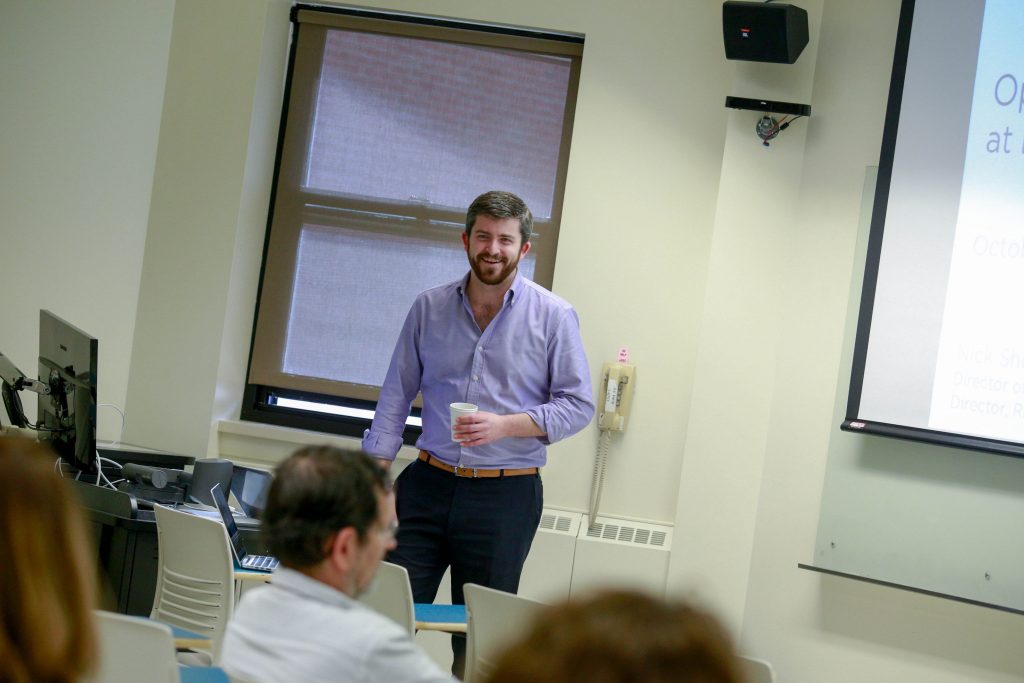
Textbook fees and paywalls may become a thing of the past if Nick Shockey’s vision for the future of education becomes a reality.
Shockey, director of programs and engagement at Scholarly Publishing and Academic Resources Coalition, an organization dedicated to making educational materials, research and data freely available to the public, presented to Binghamton University faculty members on Oct. 25 on open access.
Open access, a policy movement that’s gained momentum over the past five years, aims to remove paywalls that prevent students and faculty members from accessing scholarly works ranging from textbooks to research articles. Harvard University currently uses an open-access policy, making scholarly articles written by Harvard faculty freely accessible on the internet.
The University Faculty Senate, a SUNY governing body that can suggest changes in educational policy, passed a resolution in April 2015 calling for individual SUNY campuses to consider adopting open-access policies. Prior to the resolution, Stony Brook University adopted an open access model in February 2017.
Shockey said the growing popularity of the open-access movement was natural because of the growing gap between the people who use scholarly works and the corporations that supply them.
“The technological capacity that we have to get this information into the hands of anybody on the planet has far outstripped the business models that we have for doing that,” Shockey said.
If an open-access policy was fully implemented on campus, all course materials would be required to be open access and most, if not all, research would be freely accessible. The College Board estimates that a student’s yearly cost of textbooks and supplies is around $1,298; that number would decrease significantly for BU students if the University chose to implement an open-access policy, according to Shockey. He said the benefits of using open-access materials extend far beyond the financial realm.
“There’s an increasing body of evidence looking at the learning outcomes of courses taught with open access.” Shockey said. “All the research shows that learning outcomes are the same or actually better.”
But many of the faculty members in attendance expressed their doubts about completely upending a system that has existed for years. Alex Feingold, a professor of mathematics, said he was concerned about compensation for scholarly work.
“If a professor invests several years into creating a book that they could get royalties from, that’s a big financial incentive to not give it away for free,” Feingold said.
Others showed support for the idea of open access and expressed their frustration with the current system. Elizabeth Brown, a librarian and director of assessment and scholarly communications at BU, said universities can only do so much to combat the ever-increasing costs of subscriptions to academic journals.
“Part of their business plan was, ‘Well, we’re gonna tie the price to the amount of content in the journals, so if we have 10 percent more content here we’re gonna raise the price 10 bucks,’ and you can’t control that,” Brown said.
Shockey said these policies can only really be put into effect if the majority of a university’s faculty supports them.
“You can have the most compelling argument in the world about how much students will save, but if the faculty don’t think it’s quality, it’s not going anywhere,” Shockey said.


